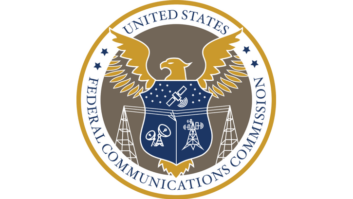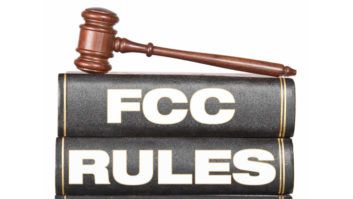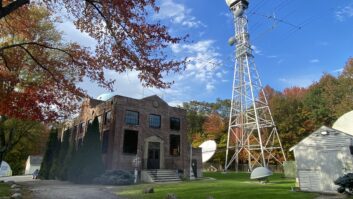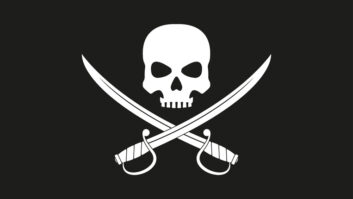The FCC granted two new CPs and one new license in the high-frequency international broadcast band — known to most as the shortwave band — to U.S. operators in January.
The two CPs granted in Illinois — to DPA Mac, based in San Francisco and Parable Broadcasting, based in Virginia — were partial in nature. These operators received grants for traditional international band broadcasting, under Part 73 of the FCC rules. But the applicants were denied their desire for “datacasting,” or nonbroadcast, point-to-point transmissions.
[Read the construction permit grants for Parable Broadcasting and DPA Mac from the FCC.]
Multiple objections had been filed with the commission against the two applications. They questioned how such data transmissions could be received by the general public, as such licenses are intended.
“We find that a partial grant of the application is in the public interest, as it would enable the general public in foreign countries to directly receive programming,” the commission wrote in its CP grant to Parable Broadcasting.
A group called the “High-Frequency Parties” had filed an objection with the FCC regarding the Parable application. “Persons wishing to conduct commercial HF point-to-point messaging for third parties should do so in a radio service dedicated to that function,” they wrote in the objection, “and if none exist, they should petition the FCC to create or reinstate such a service.”
The commission concurred. “Such encoded data would render the transmitted signal incapable of being received by the general public in other countries and not enjoyable as an international broadcast service,” it wrote in granting the two CPs.
Parable Broadcasting had filed for a construction permit in April 2020 for a station from Batavia, Ill., while DPA Mac filed in December of that year for one in Maple Park, Ill. Both communities are within 50 miles of Chicago, west of the city.
The third station, granted call sign WIPE and filed by Turms Tech, which is based in New York City, is farther along. It has been granted a license, as opposed to a CP, as of January of this year. Turms too filed for its application in 2020.
[Read the Turms Tech WIPE IHF license grant.]
All three applicants wish to use the Digital Radio Mondiale or DRM standard.
Multiple objections were also filed against the Turms application. Turms never explicitly requested datacasting in its application but speculation has abounded. It originally mentioned its desire to “broadcast ‘financial, economic news and data through distribution of programs generally prepared on the basis of requests by clients.’”
As a result, the FCC reminded Turms of the nature of its license in the grant.
“[B]oth audio and data components of all broadcasts by any International Broadcast station must meet the definition of broadcasting,” it wrote in Turms’ grant. “Licenses for International Broadcast stations do not authorize non-broadcast services, such as subscription-based data transmissions.”
The three applicants are left with the opportunity to broadcast on shortwave stations in the year 2025. But what do they plan to use the stations for?
Meetings raised with the FCC
According to the public record, each of the operators met with FCC officials about their plans; but public information is sparse.
Here is a chronology based on filings by the operators, their legal representation and the FCC’s Office of International Affairs.
DPA Mac – CP for Maple Park, Ill., IHF station
DPA Mac is operated by entrepreneur Seth Kenvin. The applicant originally stated that its broadcasts, via DRM, “will be a supplemental, fee-for-service datacast optimized for low-latency transmissions.”
However, the commission wrote in its grant: “Based on the record and the commission’s rules and precedent, we find that the proposed ‘supplemental datacast’ service is not permitted under the International Broadcasting Service rules.”
Kenvin’s legal representation met with five members of the commission’s Office of International Affairs in December 2021 to discuss plans for the station. In a summary by its legal team, it said it would transmit data via DRM without encryption. It referenced a “supplemental datacast” with “proprietary modulation” to reduce latency. “DPA Mac will use purpose-built equipment to transmit, receive, encode, and decode the supplemental datacast for the benefit of fee-for-service customers,” its legal counsel wrote.
DPA Mac representatives met again with members of the FCC’s Office of International Affairs and the Office of General Counsel almost a year later. A summary of the meeting by DPA Mac’s legal representative stated “the proposed HF station would transmit Voice of America audio and real-time ticket feeds of stock market information to anyone in Europe and many nations of Asia that has access to a standard, off-the-shelf DRM radio receiver.”

But the applicant continued to advocate for a waiver to allow a separate, encrypted feed in its transmission, saying datacasting would allow “greater access to timely data and information about the performance of stocks, bonds, derivatives, foreign exchange and commodities in U.S. exchanges will serve the public interest.”
In DPA’s 2020 application, it listed Tamir Ostfield of Raft Technologies as its technical consultant. Raft is an Israeli developer of low-latency HF systems for so-called algorithmic trading.
In DPA’s most recent meetings with the FCC, the subject was to clarify that Raft did not have a controlling interest in the shortwave broadcast license. DPA Mac described itself as having an “arms-length” distance from Raft.
DPA Mac also sought a waiver to broadcast with a lower transmitter output than required by Part 73, seeking a 2 kW output. Minimum power levels start at 50 kW baseline for AM and 10 kW DRM.
It was unable to convince the commission on either account. The FCC mentioned the need for such a data transmission to be coordinated among ITU member countries. “As the propagation of the proposed service would cover and affect many other ITU member countries, we find that such multilateral coordination outside the established ITU processes would be unfeasible,” the FCC wrote.
Parable Broadcasting – CP for Batavia, Ill. IHF station
Charles Schue, the operator of Parable Broadcasting, spoke on a video conference call with six members from the commission in January 2022. Schue said his proposed station would broadcast via DRM and comply with existing IHF rules. He referenced discussions with a Catholic radio and TV programmer, an educator and an author who expressed interest in broadcasting audio on his station.
With regard to datacasting, Schue said the station would not be offering a subscription service nor did it have any knowledge that any content provider would provide a subscription service related to the station’s content.
But in the meeting, according to the commission, Parable referenced a datacast provider being able to provide content “that is encoded at times.” The operator emphasized that the “encoded” content was “expected to be a negligible portion of the datacast airtime and will not interfere in any way with the simultaneously broadcasted audio content.”
In Parable’s CP grant, the commission said any encoded portion of data transmissions “would not conform to the requirements” of its international broadcast service.
Turms Tech – License for Alpine, N.J., IHF station
Paolo Cugnasca, the manager for Turms Tech, was on a conference call with FCC staff in January 2022. In a summary filed to the commission, he said the proposed station intended to broadcast in the DRM standard. “Contents will not be encrypted and will be available to the audience under the area of coverage without subscriptions,” he wrote.
Turms plans to broadcast from the historic Armstrong Tower in Alpine. In theory, WIPE could begin broadcasting at any time.
The FCC noted the antenna Turms plans to use at Alpine, a SteppIR DB36 yagi, must first obtain an antenna code issued by the ITU before the Office of International Affairs can assign the operator international broadcast frequencies. In its application, Turms desired to operate on 9.650, 11.850, 13.720 and 15.450 MHz.
Cugnasca declined to comment when reached by Radio World regarding this story.
Calls and emails to Kenvin and Schue, meanwhile, were not returned.
How rare are new shortwave stations in the U.S.?
The following is a list of the active private shortwave broadcasters in the U.S., with what are believed to be their first operation dates, collected from the FCC website and Wikipedia.
This list does not include government broadcasters such as the Voice of America, Radio Free Europe/Radio Liberty or WWV, for example.
| Callsign | Community of License | State/Territory | First Year Believed to be Operating |
|---|---|---|---|
| KNLS | Anchor Point | AK | 1983 |
| KSDA | Agat | Guam | 1987 |
| KTWR | Agana | Guam | 1977 |
| WBCQ | Monticello | ME | 1998 |
| WEWN | Vandiver | AL | 1992 |
| WINB | Red Lion | PA | 1962 |
| WJHR | Milton | FL | 2009 |
| WMLK | Bethel | PA | 1985 |
| WRMI | Okeechobee | FL | 1994 |
| WRNO | New Orleans | LA | 1982 |
| WTWW | Lebanon | TN | 2010 |
| WWCR | Nashville | TN | 1989 |
Bennett Kobb, a member of the High Frequency Parties that filed an objection against the Parable application, has extensively followed these proceedings, including as the editor for Experimental Radio News. He told Radio World that these applications are highly unusual because the FCC typically receives only renewal applications for the service.
A license for International Fellowship of Churches to operate KIMF in Lander County, Nev., granted in 2017, recently expired.
While an operation like WBCQ stands out, as Radio World profiled last year, in the appeal of broadcasting from the U.S. to foreign audiences has diminished, for a multitude of reasons. Kobb wonders how any of the three prospective operators could make a go of conventional shortwave operation playing by the rules as they are constituted.
[Related: “WBCQ: A One-of-a-Kind Shortwave Radio Station”]
“Perhaps Turms’ WIPE will be the first to sign on, but unless and until that station begins service, all we have is speculation,” Kobb said.
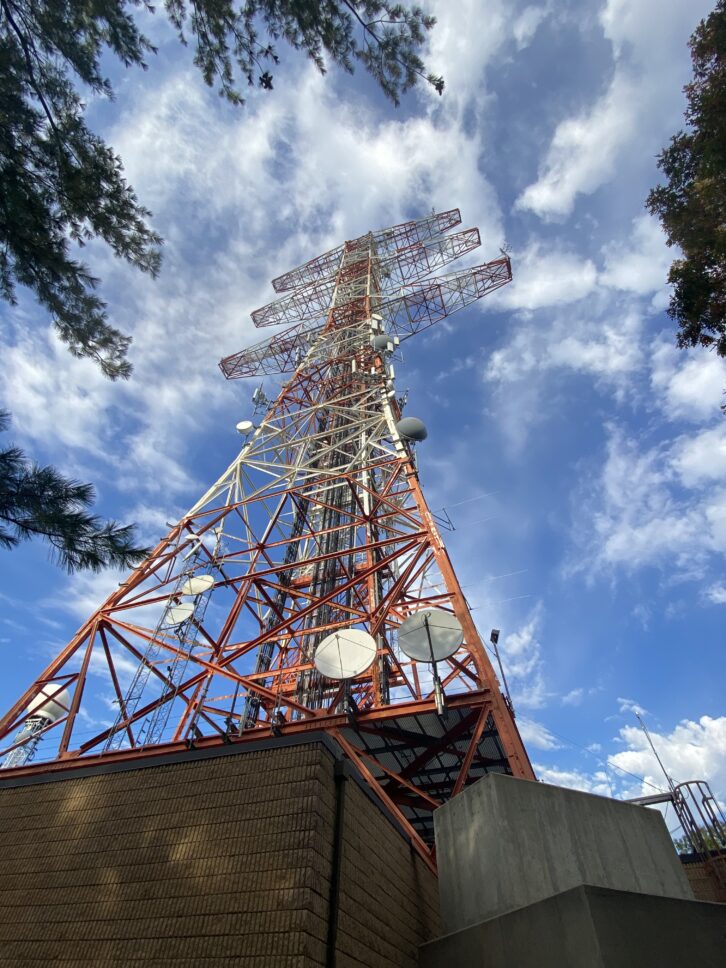
High-stakes trading
Another group of petitioners makes no bones about their desired use of the shortwave spectrum.
The Shortwave Modernization Coalition (SMC) filed a petition in 2023 to amend existing FCC rules to allow long-distance non-voice communications between 2—25 MHz. The firms that comprise the coalition largely “serve as market makers and liquidity providers for exchange-traded financial instruments,” according to the introduction in the petition.
The SMC petition goes on to explain how frequencies in the “under-licensed” band are the optimal medium for fixed, long-distance transmission of time-sensitive data.
“The value is so significant that it has driven tremendous engineering efforts and real estate acquisitions to support both experimental HF facilities and more conventional telecom networks,” Kobb said.
Several publications have profiled how high-volume stock traders look for every advantage possible to shave off milliseconds to gain an edge. While data is transmitted between continents via undersea fiber-optic cables, over-the-air radio signals are inherently faster. A Wall Street Journal profile on high-frequency trading cited Deutsche Börse data showing that sending data from Chicago to Frankfurt via shortwave is nine milliseconds faster than via undersea cables.
DPA Mac, Parable Broadcasting and Turms Tech are not named as part of the SMC.
The petition remains pending before the FCC.
Experimental HF stations
Another avenue that has been pursued by HF traders are experimental radio service licenses.
DPA Mac, under its former name 3DB Communication, also operates experimental HF station WI2XXG.
Experimental HF stations can operate under Part 5 of the FCC rules. The commission states such licenses “are not permitted to provide commercial service, charge fees or receive payments for products or services of operation.”
Kobb detailed how traders have made use of such licenses. He indicated they’ve ultimately reached a dead end there, too, as in the specific case of DPA Mac, the FCC placed wording prohibiting “widely divergent and unrelated experiments” in its ERS license.
Ham interference concerns
Our Randy Stine reported on amateur radio operators raising worry of interference produced by an HF band full of financial traders. The ARRL has already made its feelings against the service known. Kobb mentioned that operators already are familiar with unidentified, high-power transmissions detected in or adjacent to the amateur radio bands.
The U.S. Coast Guard also placed concerns of interference in the 2—25 MHz band from a proposed data service record.
Much would need to transpire to produce a shortwave “reawakening.” But the outcomes of these three grants will have quite a few people watching.
“The FCC could combine the Part 90 and Part 73 issues into a single, omnibus shortwave proceeding,” Kobb wrote on his website.
A need for reform
While Kobb has filed objections against the datacasting portion of the applications, he also felt it is time to update HF band regulations. They date back to the 1950s and he believes they prevent innovation.
Among them are rules forbidding HF broadcasters from constructing and operating primarily for domestic audiences. Minimum power levels are “unnecessarily high,” Kobb believes. There are rules that also dictate language and advertising practices.
“It’s long past time for sweeping review and update of these old regulations,” he said of the Part 73 and Part 90 rules.
The applicants each applied to broadcast in DRM. Parable and DPA Mac mentioned in their filings with the FCC how DRM can be heard via “off-the-shelf” equipment. Kobb expressed skepticism. “Although DRM is an established technology, no private, economically sustainable DRM HF broadcast service has ever been demonstrated,” he said.
For now, we wait to see if any of the three stations ends up coming on the air in traditional shortwave form.
“An open question is whether the Carr FCC will simply give the SMC what it wants, or will take the further step to address the regulations that suppress innovation in the HF service,” Kobb said.

